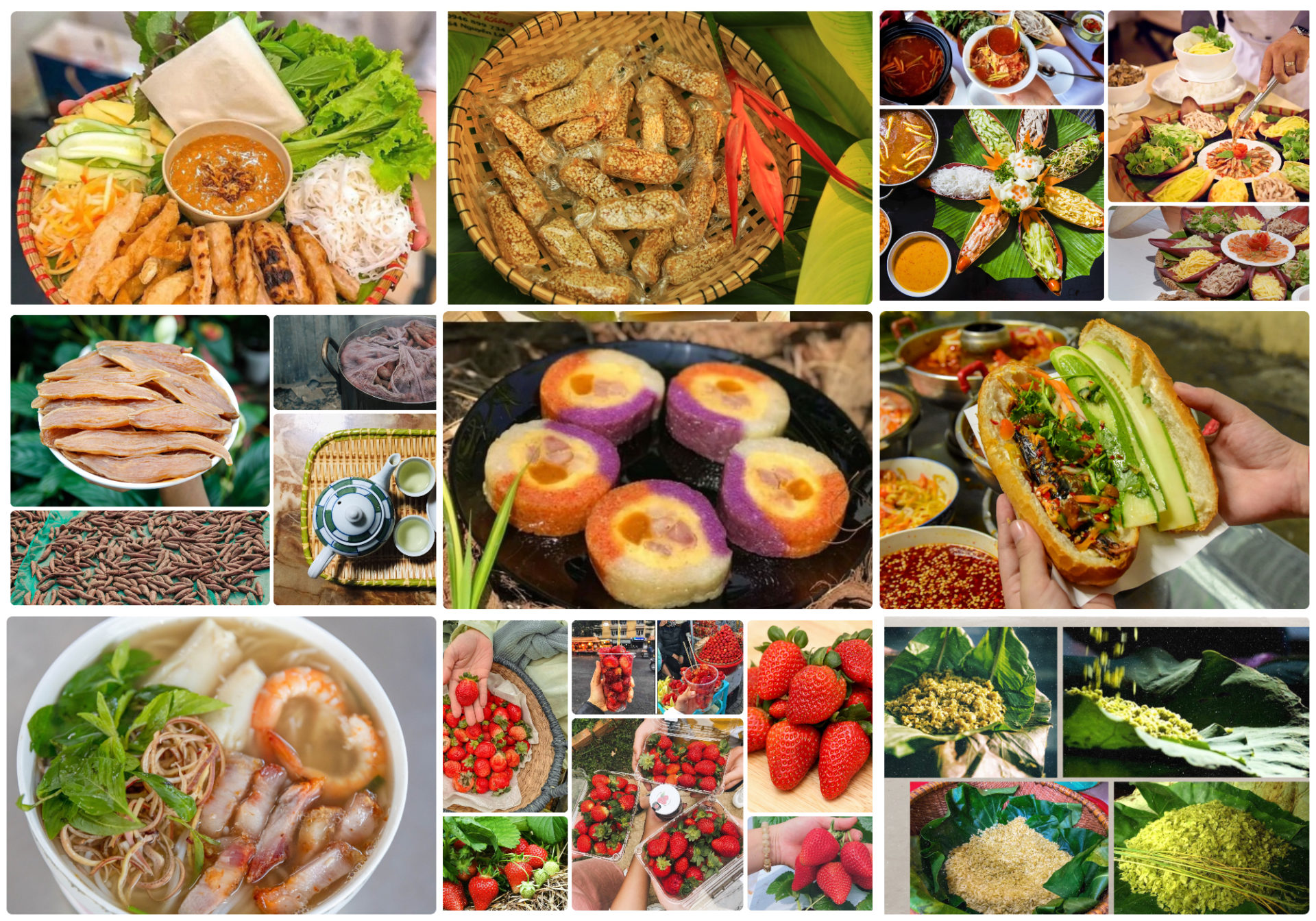The Asia Book of Records announced 10 ASIAN RECORDS FOR VIETNAMESE CUISINES AND SPECIALTY GIFTS for phase IV, 2023-2024, including:
05 SPECIALTY DISHES:
– Saigon’s banh mi (Ho Chi Minh City)
– Hue Mussel Rice (Thua Thien – Hue Province)
– Lau Tha hot pot (Binh Thuan Province)
– Ninh Hoa Grilled Spring Roll (Khanh Hoa Province)
– Soc Trang noodle soup (Soc Trang Province)
05 NATURAL SPECIALTIES AND GIFT SPECIALTIES:
– Vong village’s green rice (Hanoi City)
– Deo sweet potato (Quang Binh Province)
– Sesame candy (Thua Thien – Hue Province)
– Da Lat’s strawberry (Lam Dong Province)
– Tra Cuon’s cylindrical glutinous rice cake – Banh Tet (Tra Vinh Province)
ABOUT 10 ASIAN RECORDS FOR VIETNAMESE CUISINE AND SPECIALTY GIFTS
- SAIGON’S BANH MI (HO CHI MINH CITY)
Banh Mi was brought to Vietnam by the French in 1859. Saigon’s Banh Mi rapidly became a familiar and popular meal among Vietnamese people through several versions. Saigon banh mi is distinguished by its crispy crust, spongy crumb, and a variety of toppings, including meat (ham, pork sausage, floss, roasted pork…), pickles, cucumber, chili, and sauce, which all combine to create a dish that is both delicious and extremely familiar and simple.
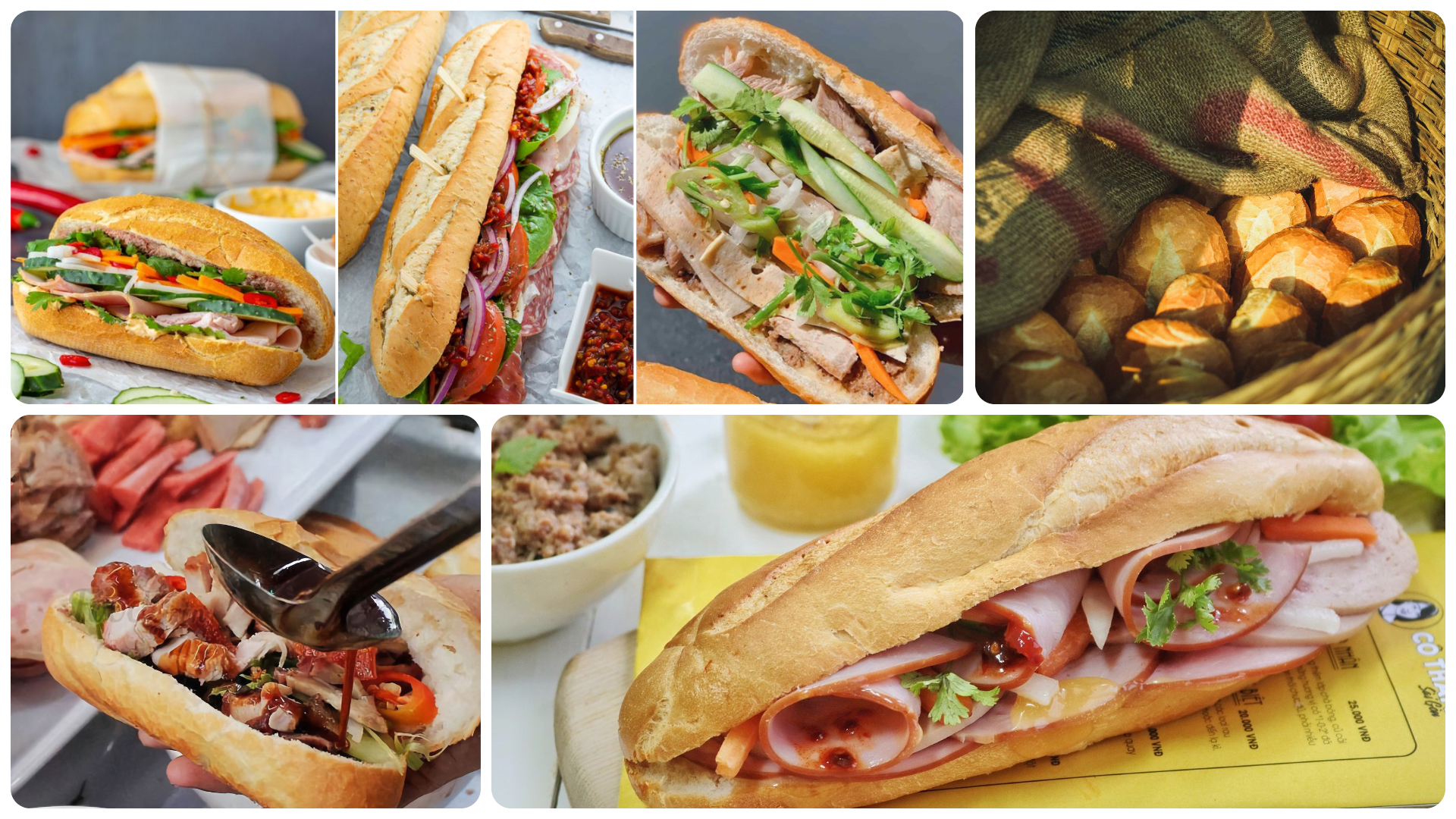
- HUE MUSCLE RICE (THUA THIEN HUE PROVINCE)
Thua Thien Hue Province’s culinary specialty is mussel rice. The mussels are carefully prepped and stir-fried in a sauce of vermicelli, dried bamboo shoots, and shredded pork. The mussel rice dish’s ingredients are all chilled, except for the mussel water, which must be maintained boiling hot and ginger added to enhance flavor and assist digestion. Mussel rice is also accompanied by a variety of shredded fresh vegetables, including banana flowers, bamboo shoots, bean sprouts, water spinach, and star fruit, to create a bright and tasty dish.
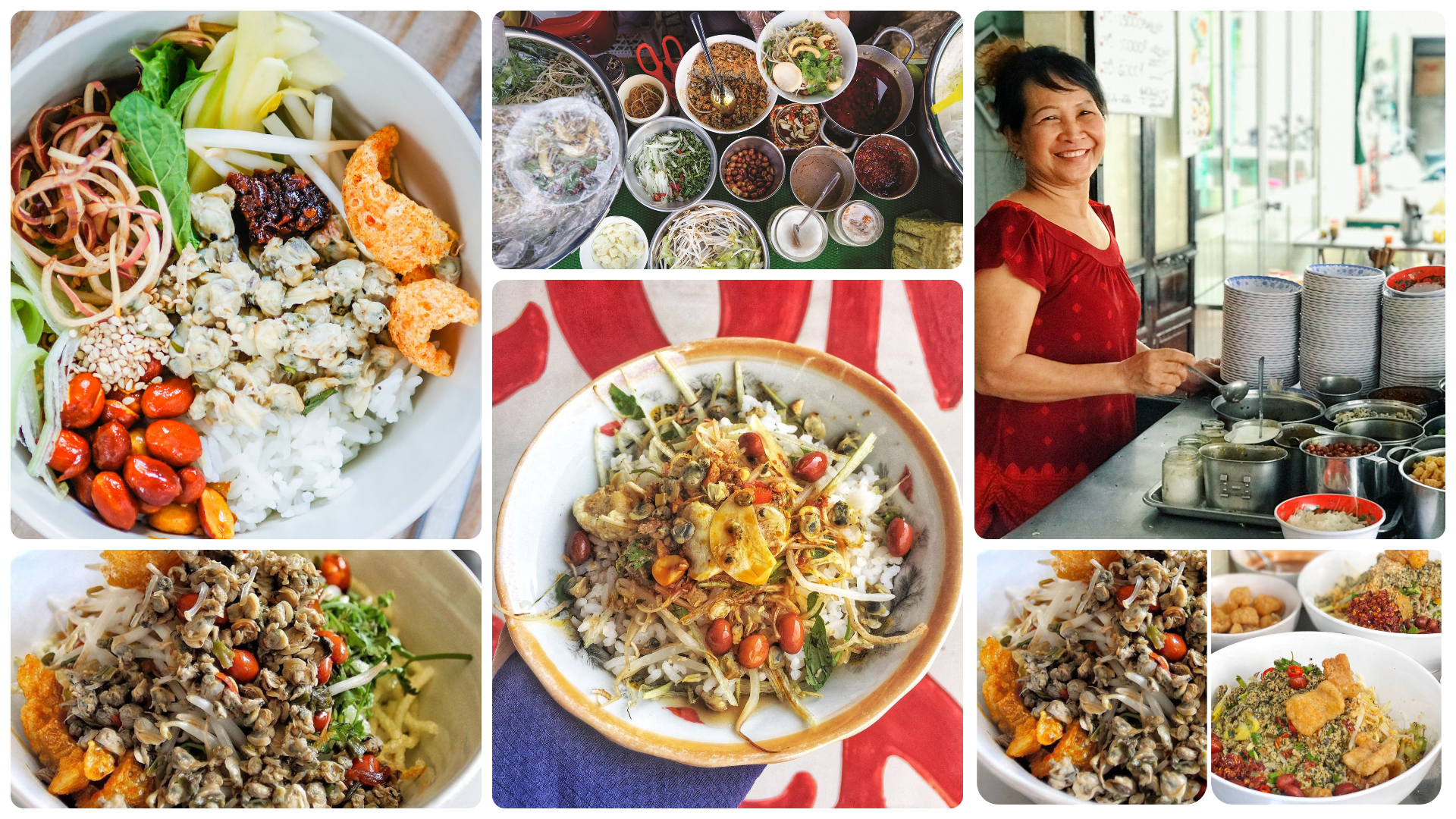
- PHAN THIET THA HOT POT (BINH THUAN PROVINCE)
Tha hotpot is a dish that originated with fisherman in the waters of Mui Ne, Binh Thuan province. Fresh white sardine served with bacon and fried eggs, grilled rice paper, fresh vermicelli, sour star fruit, green mango, and various vegetables are the major ingredients of Tha hotpot. Each meal is delicately arranged in banana peels to produce a lovely and creative menu picture.
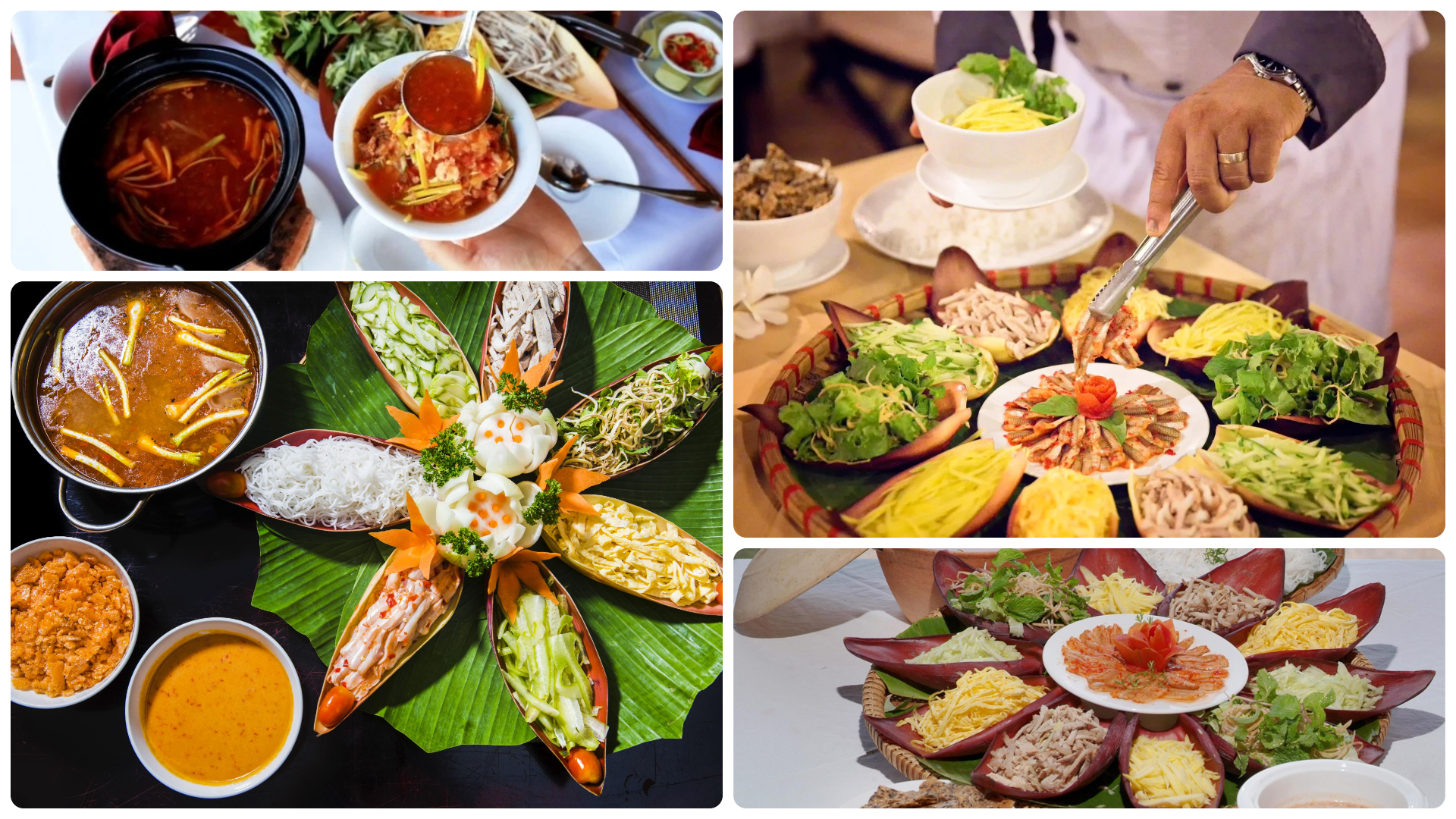
- BUN NUOC LEO – SOC TRANG NOODLE SOUP (SOC TRANG PROVINCE)
Bun Nuoc Leo – Noodle Soup is a classic Khmer cuisine from Soc Trang province. The broth of the vermicelli noodle soup is created with bo hoc fish sauce (prohok), a traditional Khmer fish sauce produced from snakehead fish, catfish, shrimp, and fresh shrimp salted for 6 months or longer. The noodle soup recipe includes vermicelli, deboned fish, thinly sliced roasted pork, shrimp, chopped chives on top, then pour hot broth and serve with vegetables, lemon, and chili. This is a popular meal in the province of Soc Trang.
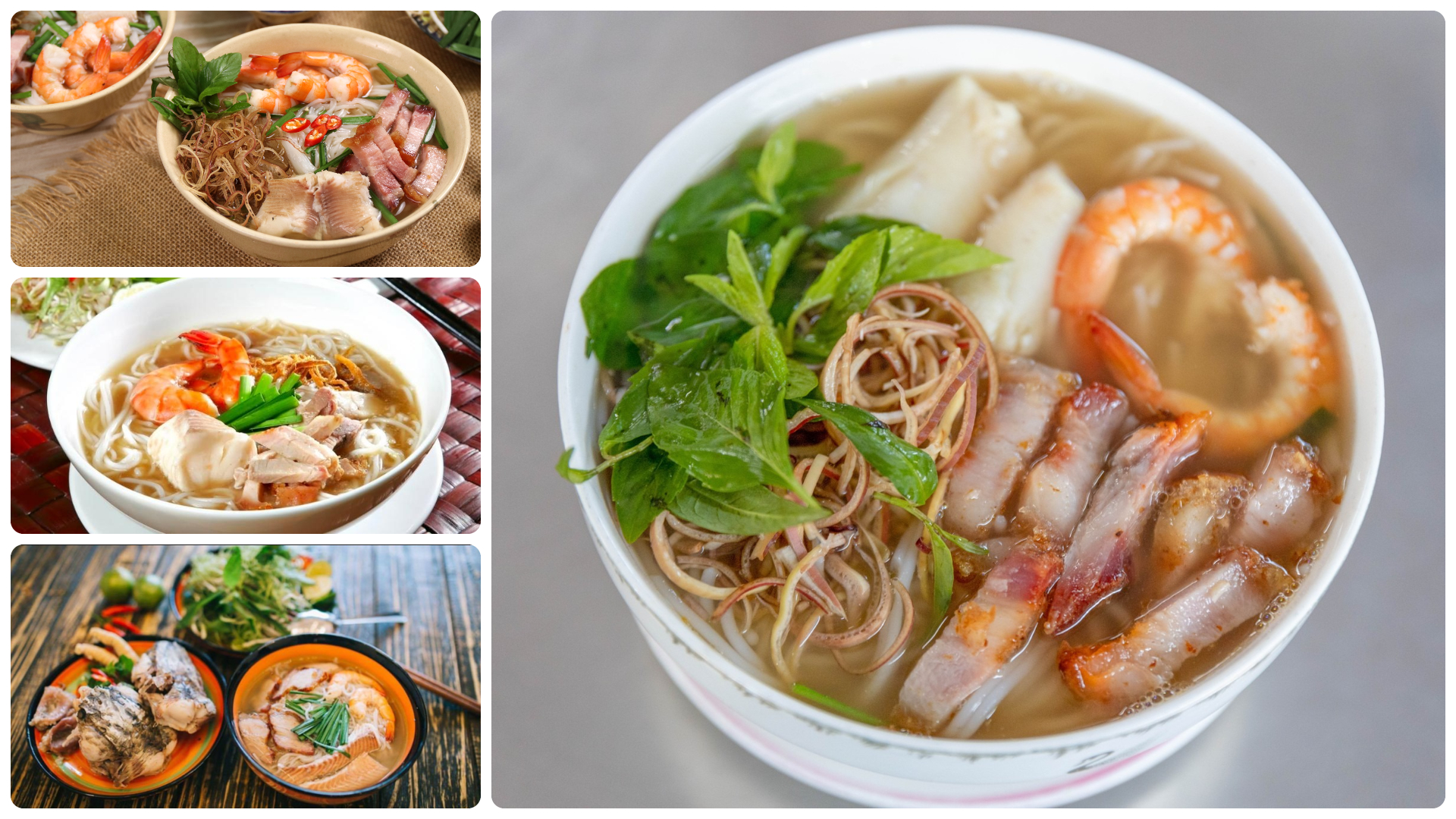
- NINH HOA GRILLED SPRING ROLL (KHANH HOA PROVINCE)
Grilled spring rolls served with crispy fried rice paper, raw veggies, cucumber, pickles, rice paper, and dipping sauce make up a portion of Ninh Hoa grilled spring rolls. The meticulously produced bowl of dipping sauce with its own recipe, a harmonious blend of meat, shrimp, pork liver, toasted peanuts, garlic, crushed chiles… creating a smooth and creamy texture, is also a highlight of the dish. Improve the flavor of grilled spring rolls.
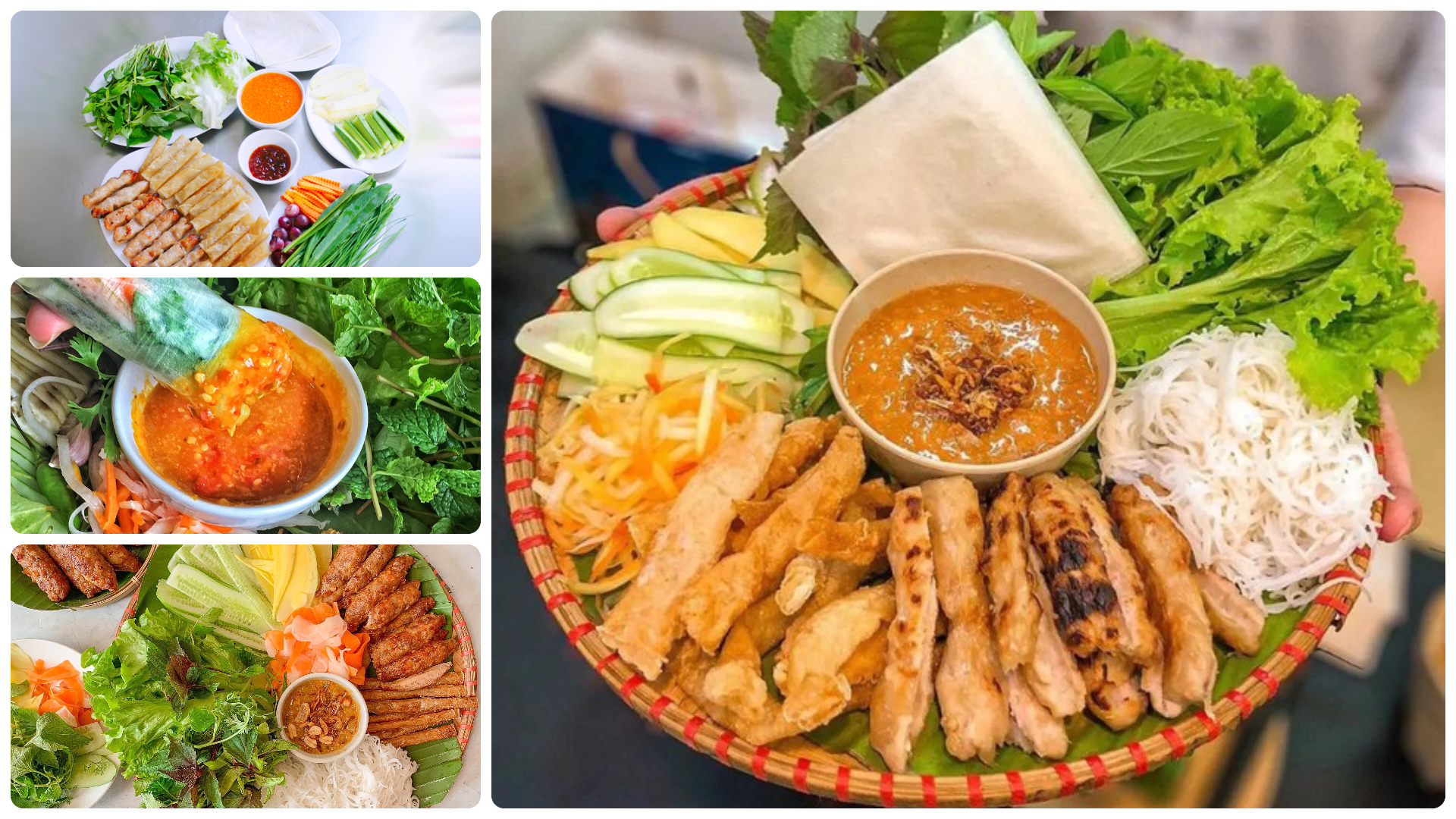
- VONG VILLAGE’S GREEN RICE (HANOI CITY)
When it comes to the iconic goods of the capital in fall, Vong village green rice is one of the first things that many people think of. Vong Village’s green rice is wrapped in two layers of leaves: the leaves on the inside keep the rice grains from drying out and the color from fading, and the outside is wrapped in lotus leaves so that the scent of the green rice blends with the lotus scent, bringing a sense of peace and gentleness. From a modest meal of rustic street sellers, this beautiful present has become a fall favorite in the Capital.
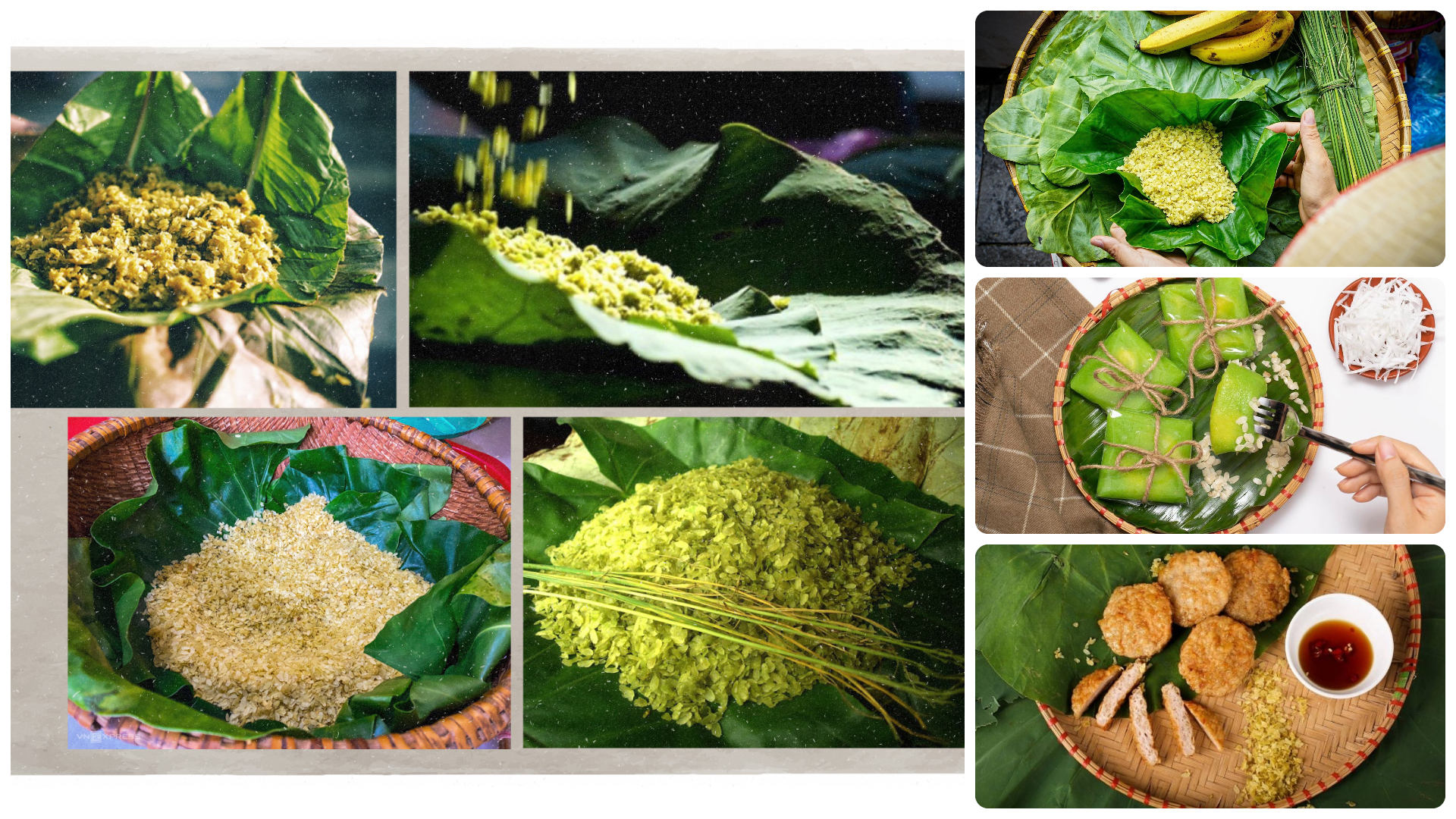
- DEO SWEET POTATO (QUANG BINH PROVINCE)
Khoai deo is a form of red sweet potato growing in sandy soil and fashioned like a ginseng root. After being harvested, potatoes are stored in a dry place before being washed, boiled, chopped into thin slices, and sun-dried for 10-12 times until they are dry and turn the color of cockroach wings. The resulting sweet potato will have a mild sweet flavor, scent, and soft texture.
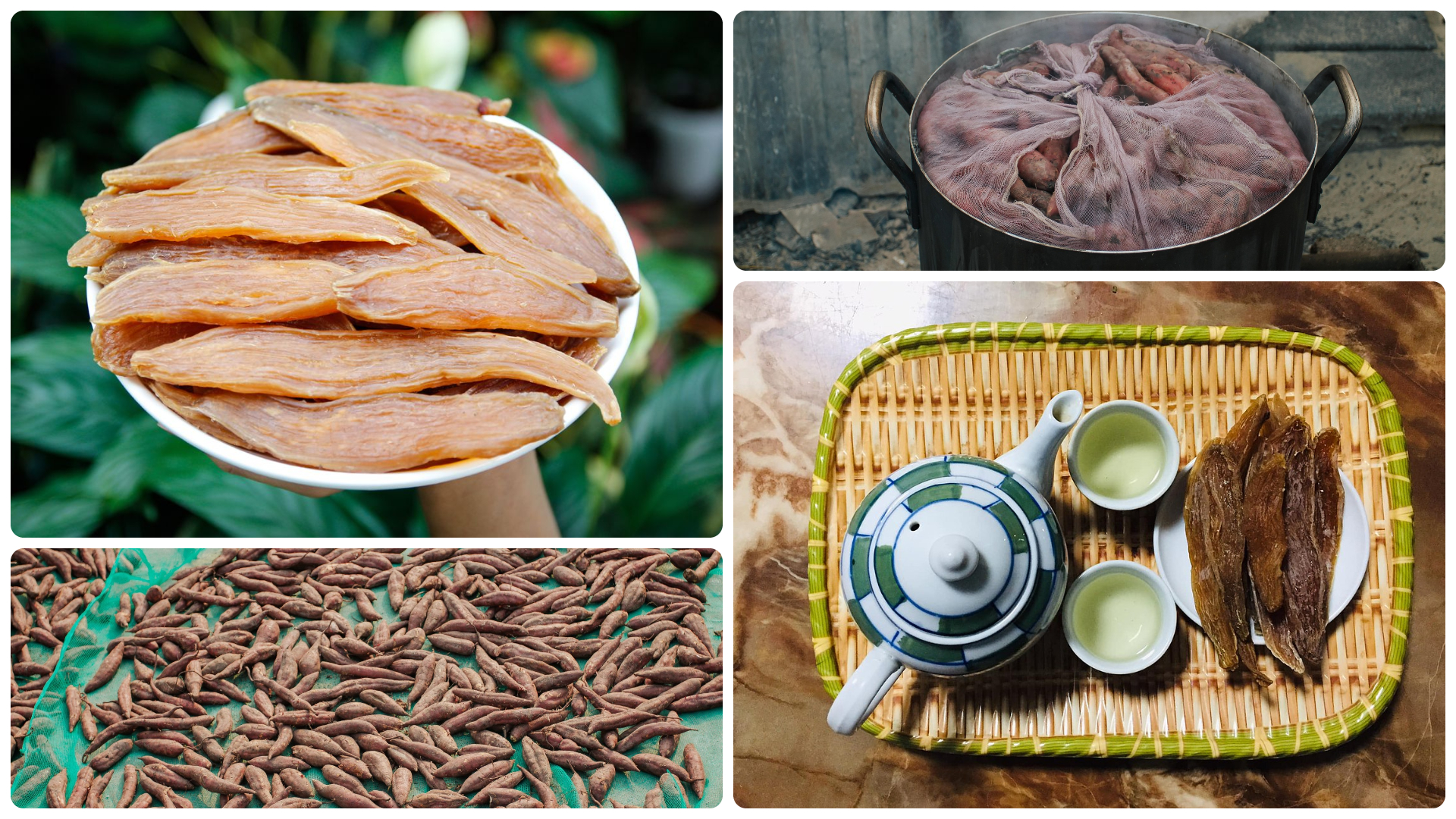
- SESAME CANDY (THUA THIEN – HUE PROVINCE)
Sesame candy is a sort of marshmallow created from tapioca starch, malt, and peanut oil that has been coated with sesame seeds. Sesame candy has been known to Hue residents since the 19th century, when the Tieu people settled in Gia Hoi district, Thua Thien Hue province. Sesame candy is not only a regular snack; it also appears on feasts and cake dishes to welcome guests during key Hue holidays.
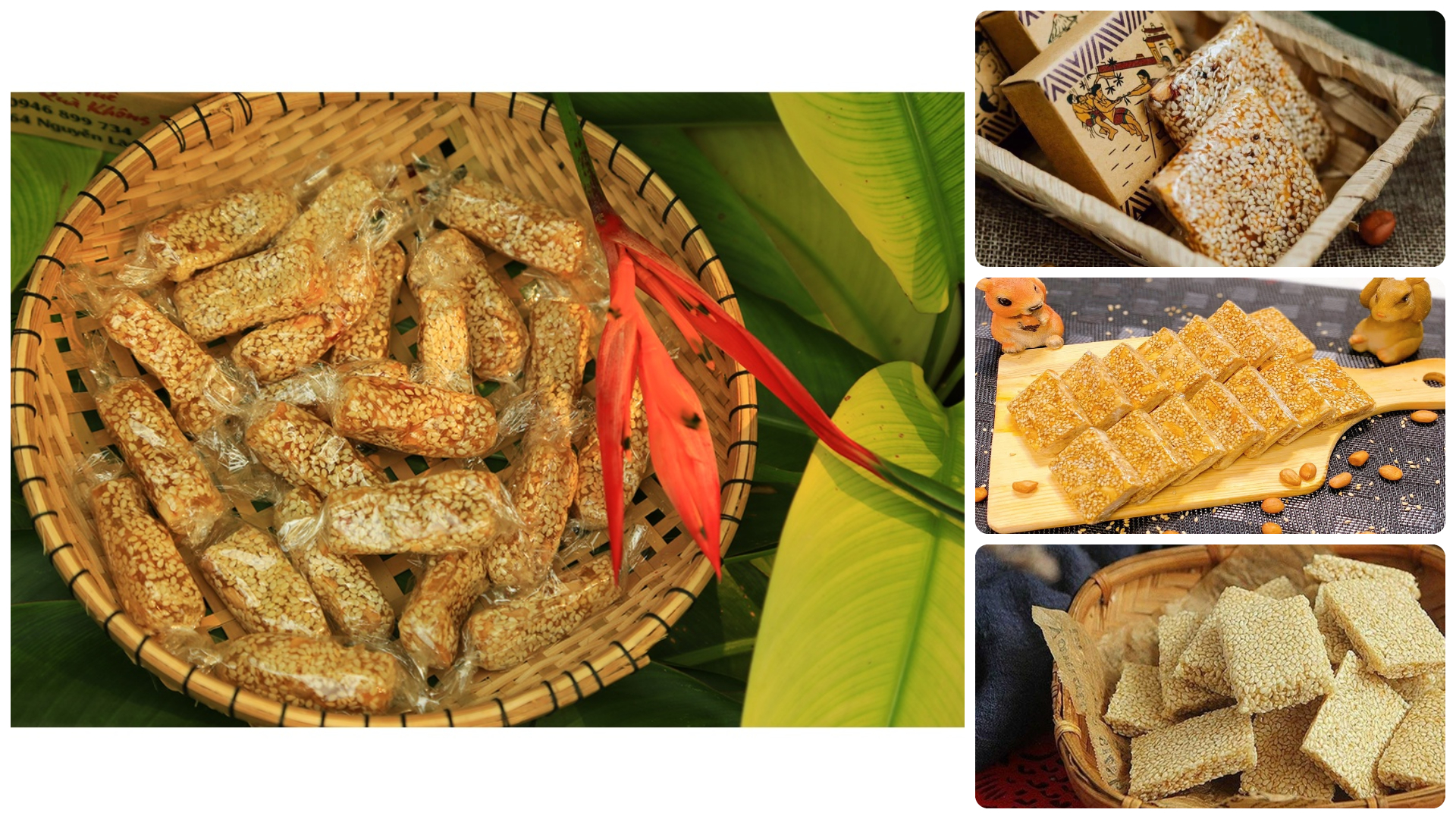
- DA LAT’S STRAWBERRY (LAM DONG PROVINCE)
Da Lat, which has a cool temperature, is currently the country’s greatest strawberry farming location, with thousands of farms. Da Lat strawberries are grown utilizing the hydroponic method with current technology and are shipped to various nations across the world. Da Lat strawberries have a sweet and tart flavor and are frequently used in dishes such as fruit pickles, yogurt, syrup, smoothies, or even as cake filling, jam, and so on.

- TRA CUON’S CYLINDRICAL GLUTINOUS RICE CAKE – BANH TET (TRA VINH PROVINCE)
Banh Tet Tra Cuon is a traditional dish served on Tra Vinh people’s trays at significant holidays. Banh Tet Tra Cuon is often three colors: red from sweet gourd, green from Katuk leaves, and purple from camphor leaves. The stuffing consists of green beans, salted eggs, pork, and fat. All of the ingredients come together to create Tra Cuon Banh Tet’s eye-catching hue, distinct aroma, and chewy texture.
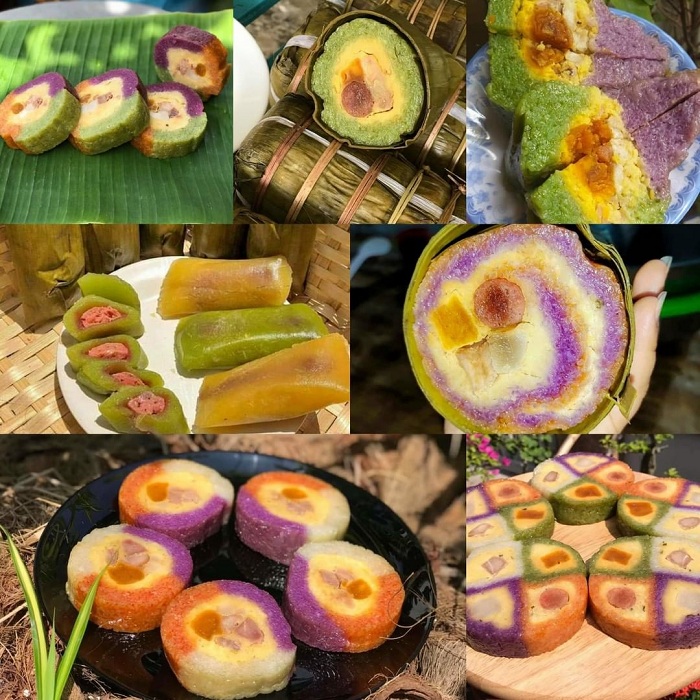
Previously, with the nomination of VietKings, in 2012, the Asia Book of Records awarded Asian record certificates for 12 Vietnamese dishes following the Asian Criterion for Cuisine and Specialty including Pho – Hanoi; Bun thang noodle – Hanoi; Crab noodle soup – Hai Phong; Beef noodle soup – Hue; Broken rice – Saigon; Spring rolls – Saigon; Burnt rice – Ninh Binh; Eel porridge – Nghe An; Dry pho – Gia Lai; Banh Khot – Vung Tau; Quang noodles – Quang Nam.
In 2013, the Asia Book of Records recognized 10 Vietnamese dishes following the Asian Records Criterion for Cuisine and Specialty, including: La Vong fish cake – Hanoi; Perch vermicelli – Hai Duong; Ha Long squid cake – Quang Ninh; Cao Lau Hoi An – Quang Nam; Quy Nhon fish cake noodle soup – Binh Dinh; Leaf salad – Kon Tum; Banh beo bi – Binh Duong; Bun Suong noodle soup – Tra Vinh; My Tho Noodle Soup – Tien Giang; Fish noodle soup Chau Doc – An Giang. Along with 08 Vietnamese specialties recognized by the Asian Book of Records following the Asian Criterion for Cuisine and Specialty including Mung Bean Cake – Hai Duong; Tea – Thai Nguyen; Tra Bong Cinnamon – Quang Ngai; Ngoc Linh Ginseng – Kon Tum; Buon Me Coffee – Dak Lak; Trang Bang dew-dried rice paper – Tay Ninh; Coconut milk rice paper – Ben Tre; Phu Quoc Pepper – Kien Giang.
In 2022, the Asia Book of Records awarded Asian Record certificates for 7 groups of Vietnamese dishes following the Asian Criterion for Cuisine and Specialty, including: Neem salad – An Giang; Phu Quoc herring salad – Kien Giang; U Minh fermented fish hotpot – Ca Mau; Lotus dishes – Dong Thap; Bronze featherback fish dishes – Hau Giang; Ocean tuna dishes – Phu Yen; Coconut dishes – Ben Tre. Along with 04 Vietnamese specialties recognized by the Asian Book of Records following the Criterion for Cuisine and Specialty, including: Ly Son Garlic – Quang Ngai; Vinh Kim Lo Ren star apple – Tien Giang; Edible bird’s nest – Khanh Hoa; Phu Quoc rose myrtle wine – Kien Giang.



